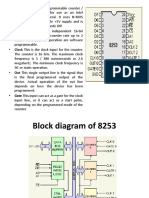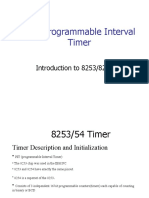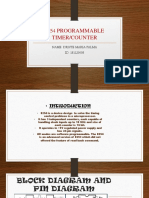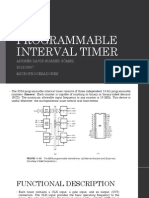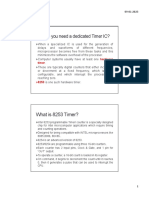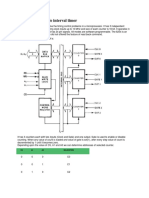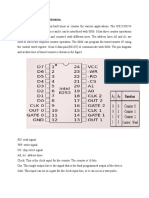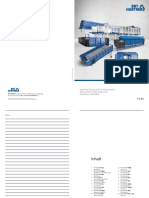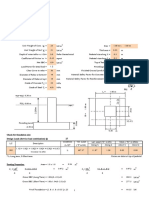0% found this document useful (0 votes)
111 views12 pages8254 Timer
The 8254 timer has 3 independent 16-bit counters that can be programmed in 6 different modes for counting in binary or BCD. It has a read back command that allows checking the count value, programmed mode, current mode, and status. Each counter has inputs for a clock, gate, and output and is programmed via a control word to select the operating mode and count value. The 6 modes determine how the counter and output respond to the clock and gate signals.
Uploaded by
PRIYANKA CHOUDHARICopyright
© © All Rights Reserved
We take content rights seriously. If you suspect this is your content, claim it here.
Available Formats
Download as PDF, TXT or read online on Scribd
0% found this document useful (0 votes)
111 views12 pages8254 Timer
The 8254 timer has 3 independent 16-bit counters that can be programmed in 6 different modes for counting in binary or BCD. It has a read back command that allows checking the count value, programmed mode, current mode, and status. Each counter has inputs for a clock, gate, and output and is programmed via a control word to select the operating mode and count value. The 6 modes determine how the counter and output respond to the clock and gate signals.
Uploaded by
PRIYANKA CHOUDHARICopyright
© © All Rights Reserved
We take content rights seriously. If you suspect this is your content, claim it here.
Available Formats
Download as PDF, TXT or read online on Scribd
/ 12





